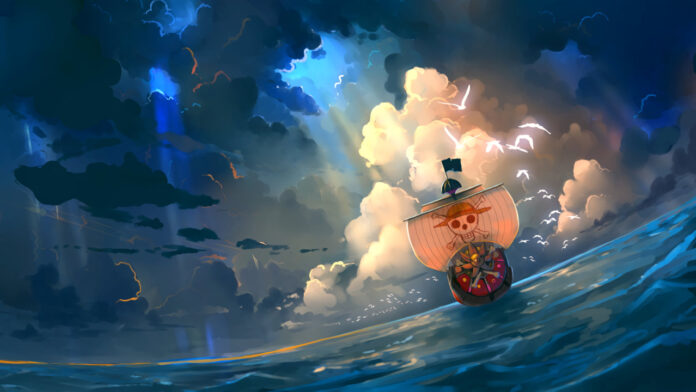CG motion graphics is a form of digital animation that combines computer-generated imagery (CGI) with motion graphics to create dynamic visual effects. The primary goal of CG motion graphics is to produce engaging and compelling visuals that can be used in a variety of media, including film, television, advertising, and video games.
CG motion graphics is a relatively new field that has emerged in response to the increasing demand for high-quality visual effects in the entertainment industry. The use of computer-generated imagery has become increasingly prevalent in recent years, and it is now a vital component of many films, television shows, and video games. One of the key benefits of CG motion graphics is that it allows animators to create highly detailed and realistic visuals that would be difficult, if not impossible, to achieve using traditional animation techniques.
In recent years, CG motion graphics has become an essential tool for businesses looking to create engaging visual content for their marketing campaigns. The ability to create dynamic and eye-catching visuals has made CG motion graphics an effective way to capture the attention of consumers and communicate complex ideas in a simple and accessible way. As a result, many companies are now investing in CG motion graphics as a way to enhance their brand identity and stand out in a crowded marketplace.
Understanding CG Motion Graphics
CG Motion Graphics, also known as Computer Generated Motion Graphics, refers to the use of computer-generated graphics to create dynamic, animated visuals. This technique involves the use of advanced software and tools to create moving images that can be used in a variety of contexts, such as films, television shows, video games, and advertisements.
CG Motion Graphics can be used to create a wide range of effects, from simple animations to complex visual effects that are difficult or impossible to achieve using traditional animation techniques. For example, CG Motion Graphics can be used to create realistic simulations of natural phenomena such as fire, water, and smoke, as well as to create fantastical creatures, environments, and characters.
One of the key advantages of CG Motion Graphics is its flexibility and versatility. Using computer-generated graphics, designers can easily manipulate and refine their creations, making changes to the animation, lighting, and other visual elements as needed. This allows for a high degree of creative control and precision, as well as the ability to quickly iterate and experiment with different ideas and concepts.
Another advantage of CG Motion Graphics is its ability to create highly detailed and realistic visuals. With the use of advanced rendering techniques, designers can create images that are indistinguishable from real-life objects and environments. This level of realism can be particularly useful in creating immersive, engaging experiences for viewers.
Overall, CG Motion Graphics is a powerful tool for creating dynamic, visually stunning animations and visual effects. Whether used in film, television, video games, or advertising, this technique offers a high degree of creative control and flexibility, as well as the ability to create highly realistic and detailed visuals.
The Process of Creating CG Motion Graphics
Creating CG motion graphics involves a process that requires careful planning, execution, and post-production. The process typically involves four main stages: concept development, storyboarding, designing and animating, and post-production.
Concept Development
The first stage of creating CG motion graphics is concept development. This stage involves brainstorming ideas and developing a concept for the motion graphics project. During this stage, the creative team works closely with the client to determine the goals and objectives of the project.
Once the objectives are defined, the team develops a creative brief that outlines the project’s scope, target audience, and messaging. This brief serves as a guide for the rest of the project and helps ensure that the final product meets the client’s expectations.
Storyboarding
The next stage of creating CG motion graphics is storyboarding. During this stage, the creative team develops a visual representation of the project’s script. Storyboards are typically created using a combination of sketches, illustrations, and text.
The storyboard serves as a blueprint for the project and helps the team visualize how the final product will look. It also helps the team identify any potential issues or challenges that may arise during the design and animation stages.
Designing and Animating
The designing and animating stage is where the project really comes to life. During this stage, the creative team creates the visual elements of the project, including characters, backgrounds, and special effects.
The team then animates these elements using a variety of techniques, such as keyframe animation, motion capture, and particle effects. The animation process is time-consuming and requires a great deal of attention to detail to ensure that the final product is polished and professional.
Post-Production
The final stage of creating CG motion graphics is post-production. During this stage, the team adds sound effects, music, and voiceovers to the project. They also make any necessary adjustments to the animation and visual effects to ensure that the final product meets the client’s expectations.
Once the project is complete, the team delivers the final product to the client in the desired format. The client then has the opportunity to provide feedback and request any necessary revisions before the project is considered complete.
Importance of CG Motion Graphics in Various Industries
CG motion graphics have become an essential part of various industries, including film and television, advertising, gaming, and virtual reality. In this section, we will explore the importance of CG motion graphics in each of these industries.
Film and Television
CG motion graphics have revolutionized the film and television industry. They have enabled filmmakers to create stunning visual effects that were previously impossible to achieve. CG motion graphics have also made it possible to create realistic and detailed environments that transport viewers to different worlds.
In addition, CG motion graphics have made it easier to create complex scenes that would have been too difficult or expensive to film in real life. For example, the use of CG motion graphics allowed the filmmakers of “Avatar” to create an entire alien world that looked incredibly realistic.
Advertising
CG motion graphics have become an essential tool in advertising. They allow advertisers to create visually stunning ads that capture the attention of viewers. CG motion graphics can be used to create product demonstrations, explainer videos, and animated ads that showcase a product’s features and benefits.
In addition, CG motion graphics can be used to create ads that are impossible to film in real life. For example, an ad for a car can show the car driving through a futuristic cityscape, which would be impossible to film in real life.
Gaming
CG motion graphics have transformed the gaming industry. They have enabled game developers to create immersive and realistic game worlds that transport players to different places and times. CG motion graphics have also made it possible to create detailed and realistic characters that players can interact with.
In addition, CG motion graphics have made it easier to create complex game mechanics that would have been too difficult to implement without the use of CG motion graphics. For example, the use of CG motion graphics allowed the developers of “Assassin’s Creed” to create a vast open-world game that was incredibly detailed and immersive.
Virtual Reality
CG motion graphics have become an essential part of virtual reality. They allow developers to create immersive and realistic virtual environments that users can explore. CG motion graphics can be used to create realistic textures, lighting, and shadows that make virtual environments look incredibly lifelike.
In addition, CG motion graphics can be used to create interactive objects and characters that users can interact with in virtual reality. For example, a virtual reality game can allow users to interact with virtual objects and characters in a way that feels incredibly realistic.
In conclusion, CG motion graphics have become an essential tool in various industries. They allow filmmakers to create stunning visual effects, advertisers to create visually stunning ads, game developers to create immersive game worlds, and virtual reality developers to create realistic virtual environments.
Advancements in CG Motion Graphics Technology
CG motion graphics have come a long way since their inception. With the advancement of technology, the possibilities of what can be created with computer graphics are endless. In this section, we will discuss some of the most significant advancements in CG motion graphics technology.
3D Animation
One of the most significant advancements in CG motion graphics technology is the ability to create 3D animations. 3D animation has revolutionized the way we create and view motion graphics. With 3D animation, designers can create more realistic and detailed graphics than ever before. This technology has allowed for the creation of entire worlds and characters that can be manipulated in real-time.
Some of the most popular 3D animation software include Autodesk Maya, Cinema 4D, and Blender. These software programs allow designers to create complex animations with ease. They also come with a wide range of tools and features that can be used to enhance the quality of the animation.
Virtual Reality
Virtual reality has become increasingly popular in recent years. This technology allows users to immerse themselves in a virtual world and interact with it in real-time. The use of virtual reality in CG motion graphics has opened up a whole new world of possibilities. Designers can create virtual environments that users can explore and interact with.
Virtual reality has also been used in the gaming industry to create more immersive gaming experiences. With the use of virtual reality, game designers can create games that feel more like real-life experiences.
Augmented Reality
Augmented reality is another technology that has been used in CG motion graphics. Augmented reality allows designers to overlay digital content onto the real world. This technology has been used in advertising campaigns to create interactive billboards and posters.
Augmented reality has also been used in the gaming industry to create games that can be played in the real world. This technology has opened up a whole new world of possibilities for game designers.
In conclusion, the advancements in CG motion graphics technology have revolutionized the way we create and view motion graphics. With the use of 3D animation, virtual reality, and augmented reality, designers can create more realistic and immersive graphics than ever before. The possibilities of what can be created with computer graphics are endless, and we can only expect to see more advancements in the future.
Challenges in CG Motion Graphics
Creating CG motion graphics involves a set of challenges that designers must overcome to produce high-quality and engaging content. Here are some of the challenges in CG motion graphics:
Technical Challenges
CG motion graphics require a high level of technical expertise to create. Designers must have a thorough understanding of various software tools and technologies used in the creation of motion graphics. They must also be familiar with the latest trends and techniques in the field to ensure that their work is up-to-date and relevant.
Time Constraints
CG motion graphics can be time-consuming to create, especially when working on complex projects. Designers must work within tight deadlines to deliver projects on time while ensuring that the quality of their work is not compromised. This requires effective time management skills and the ability to work efficiently under pressure.
Balancing Aesthetics and Functionality
CG motion graphics must be both aesthetically pleasing and functional. Designers must strike a balance between these two aspects to create content that is visually appealing and serves its intended purpose. This requires a deep understanding of design principles and the ability to apply them in a meaningful way.
Collaboration
CG motion graphics projects often involve collaboration between multiple designers and stakeholders. Designers must be able to work effectively with others, communicate clearly, and manage feedback to ensure that the final product meets the expectations of all stakeholders.
Keeping Up with Trends
CG motion graphics is a rapidly evolving field, with new trends and techniques emerging all the time. Designers must stay up-to-date with the latest developments in the field to ensure that their work remains relevant and engaging. This requires a commitment to ongoing learning and professional development.
Future of CG Motion Graphics
As technology advances, the future of CG motion graphics looks bright. Here are some potential developments to look out for:
Real-Time Rendering
Real-time rendering is becoming more popular in the world of CG motion graphics. This technique allows designers to create high-quality graphics and animations in real-time, providing a more immersive experience for the viewer. With the increasing power of GPUs and CPUs, real-time rendering is becoming more feasible and accessible for designers of all levels.
Virtual Reality
Virtual reality is another area where CG motion graphics are expected to play a significant role. As VR technology becomes more advanced, there will be a growing demand for high-quality CG motion graphics to create immersive environments and experiences. Designers will need to adapt to the unique challenges of VR, such as creating graphics that can be viewed from any angle and designing for different levels of immersion.
AI and Machine Learning
AI and machine learning are already being used in some areas of CG motion graphics, such as character animation and facial recognition. In the future, these technologies could be used to automate certain aspects of the design process, such as creating realistic physics simulations or generating complex 3D models. This could free up designers to focus on more creative tasks and allow for faster turnaround times.
Increased Integration with Other Technologies
CG motion graphics are likely to become more integrated with other technologies in the future, such as augmented reality and 3D printing. This could open up new possibilities for designers, such as creating interactive AR experiences or designing physical products that can be 3D printed. As these technologies continue to evolve, designers will need to stay up-to-date and adapt their skills accordingly.
Overall, the future of CG motion graphics looks promising, with new technologies and techniques opening up exciting possibilities for designers. As the industry continues to evolve, it will be important for designers to stay up-to-date with the latest developments and adapt their skills accordingly.







